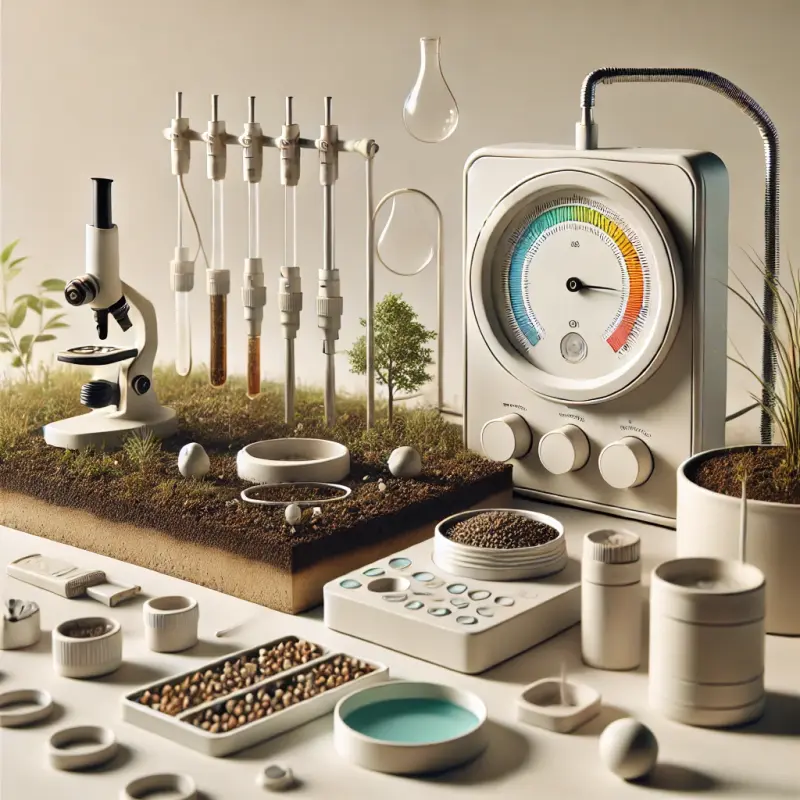Innovative Technologies for Groundwater Monitoring: How Gadgets Enhance Environmental Management
Groundwater is a vital component of the Earth's hydrological system, serving as a primary source of drinking water, agricultural irrigation, and industrial processes. Ensuring its quality and availability is crucial for environmental sustainability and public health. Recent technological advancements have introduced innovative tools and gadgets that significantly enhance the monitoring and management of groundwater resources. This article delves into these developments and examines how they contribute to improved environmental stewardship.

The Importance of Groundwater Monitoring
Monitoring groundwater involves the systematic observation and analysis of its quantity and quality. Traditional methods often relied on manual sampling and laboratory analyses, which, while accurate, could be time-consuming and limited in scope. The advent of modern technologies has revolutionized this field, enabling real-time data collection and more comprehensive assessments.
Innovative Gadgets and Technologies in Groundwater Monitoring
-
IoT-Based Sensors
The Internet of Things (IoT) has introduced a network of interconnected devices capable of collecting and transmitting data autonomously. In groundwater monitoring, IoT-based sensors are deployed to measure various parameters such as water level, temperature, pH, and conductivity. These sensors provide continuous, real-time data, facilitating prompt detection of anomalies and informed decision-making. For instance, IoT sensors can monitor water quality indicators, enabling early detection of contamination and allowing for timely interventions.
-
Automated Data Loggers
Data loggers are electronic devices that record environmental parameters over time. Modern data loggers used in groundwater monitoring are equipped with sensors to measure water levels, pressure, and temperature. They store data at set intervals, which can be retrieved and analyzed to identify trends and changes in groundwater conditions. Some advanced models offer wireless data transmission, reducing the need for manual data collection and enhancing efficiency.
-
Remote Sensing Technologies
Remote sensing involves acquiring information about an area without direct contact, typically through satellite or aerial imagery. In groundwater studies, remote sensing technologies are utilized to assess land use changes, vegetation health, and surface water interactions, all of which influence groundwater recharge and quality. By analyzing these factors, scientists can infer groundwater conditions and identify areas requiring further investigation.
-
Geophysical Methods
Geophysical techniques, such as electrical resistivity tomography (ERT) and ground-penetrating radar (GPR), are employed to investigate subsurface characteristics. These methods help in mapping aquifer extents, identifying contamination plumes, and assessing soil properties affecting groundwater flow. Advancements in geophysical instruments have improved data resolution and interpretation, leading to more accurate groundwater assessments.
Benefits of Advanced Groundwater Monitoring Technologies
-
Real-Time Data Acquisition: Continuous monitoring allows for immediate detection of changes in groundwater conditions, facilitating prompt responses to potential issues.
-
Enhanced Accuracy: Modern sensors and analytical tools provide precise measurements, reducing uncertainties in groundwater assessments.
-
Cost-Effectiveness: Automated systems reduce the need for frequent manual sampling, lowering labor costs and minimizing human error.
-
Comprehensive Coverage: Technologies like remote sensing and UAVs enable monitoring over extensive and inaccessible areas, offering a broader understanding of groundwater systems.
Applications in Environmental Management
The integration of these technologies into groundwater monitoring has significant implications for environmental management:
-
Contamination Detection: Early identification of pollutants allows for timely remediation efforts, preventing further environmental degradation.
-
Resource Management: Accurate data on groundwater levels and recharge rates inform sustainable extraction practices, ensuring long-term availability.
-
Policy Development: Reliable monitoring data support the creation of informed policies and regulations aimed at protecting groundwater resources.
Challenges and Future Directions
While these technological advancements offer numerous benefits, challenges remain:
-
Data Integration: Combining data from various sources and formats requires robust systems and standardized protocols.
-
Maintenance and Calibration: Ensuring the accuracy and longevity of monitoring equipment necessitates regular maintenance and calibration.
-
Data Security: Protecting sensitive environmental data from unauthorized access is crucial for maintaining integrity and trust.
Future developments may focus on enhancing sensor capabilities, improving data analytics through artificial intelligence, and increasing community engagement in groundwater monitoring efforts.
Conclusion
The adoption of innovative gadgets and technologies in groundwater monitoring represents a significant leap forward in environmental management. These tools provide detailed, real-time insights into groundwater systems, enabling more effective conservation and sustainable use of this vital resource. As technology continues to evolve, its integration into environmental monitoring will play a pivotal role in safeguarding groundwater for future generations.
Artykuły
Zarejestruj się do naszych powiadomień, aby otrzymywać najświeższe i najbardziej interesujące artykuły bezpośrednio na swoją pocztę!